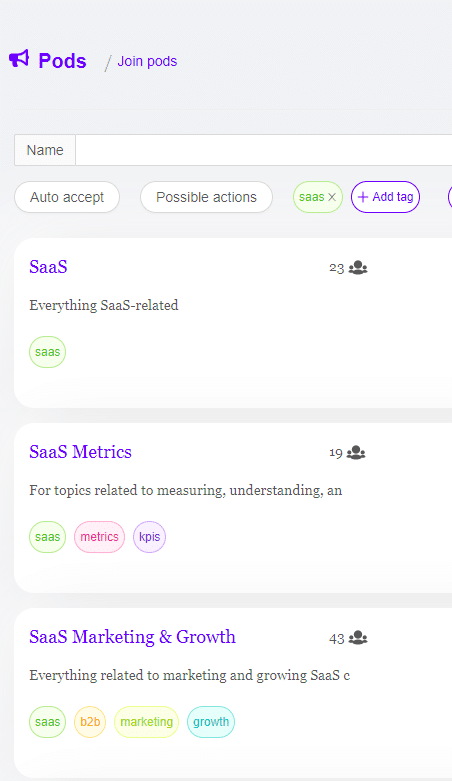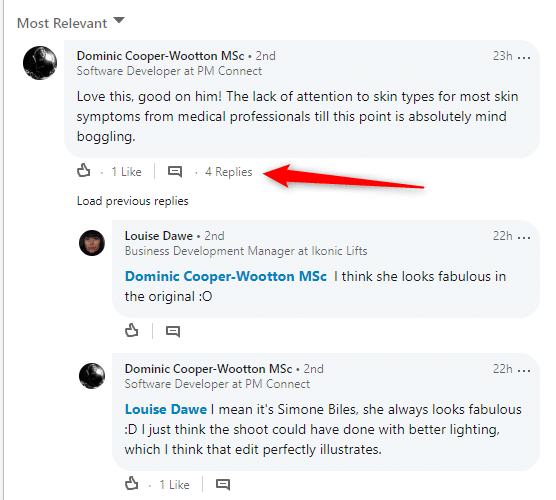Pods are born from small groups of people, organized in community on LinkedIn, Facebook or Whatsapp, to stimulate the algorithm, by posting comments and likes on the publications of other members.

As this task became more and more time-consuming (commenting on 50 posts per day takes some time), tools were born to automate this process. First Lempod, then Alcapod (closed since) and today Podawaa.
Like any automation tool, it is the right use that makes it powerful. And bad practices that affect its effectiveness.
So in this article, I present to you the best practices to get reach on your posts and the bad ones to avoid in order to keep a “clean” LinkedIn account. 😄
1. Join trusted pods
In automated pods, there is a fundamental difference with so-called “manual” pods:
- You have no control over the comments posted by your account,
- You do not have control over the content on which you engage.
You should, therefore, pay attention to a number of things.

For comments: target pods of less than 50 people
When you join a pod that allows both likes and comments, your LinkedIn account will automatically post comments and likes on other members’ posts.
Podawaa is a community-based tool: to receive, you need to give.
However, we rarely ask for more than 50 “fake” comments on a post.
I encourage you to join small pods for your comments. So your account will be less frequently used by other members to engage with false comments, which can harm your account more than just “likes”
This means less risk of posting unwanted comments on low-quality content.
Then you can join larger “Likes only” pods to request 300-400 likes on your post. The posts you like are less promoted in your network’s news feed than the posts you comment on. And you don’t risk having your account say things you don’t want.

Select pods in your industry

LinkedIn prioritizes content in the network news feed of people who engage on your post. If you choose a pod in the pharmaceutical sector while you are selling shoes, you will have views, of course, but they will be less qualified.
(Obviously, even pharmacists put on shoes but you get the idea 😁)
Using the tag search, you can filter by category and find pods that match your activity.
Check who’s on your pod
When you have joined a pod that accepts comments, I advise you to check who is in it. From a Podawaa pod’s “Members” page, you can open LinkedIn profiles to see who they are and what they post.
This helps to avoid having your account comment on inappropriate content in the future.
Use private pods and manual accept
On Podawaa, there are several types of pods: manual-accept or auto-accept, private or public.
Private pods are only accessible by a private key, shared by the members of the pods.
Pods with manual acceptance allow the administrator of the pod to accept or refuse the new member. ✅
Conversely, a public pod in auto-accept means that anyone can join the pod from the search, without any validation from the admin.
That’s why I encourage you, at least for your pods that accept comments, to join private pods, shared by people you trust. Manual acceptance is an additional guarantee of quality.

Create your own pod
What could be safer than creating your own pod? You can tag it by your theme, define whether it accepts likes or comments, and choose how to accept new members.
You are then the master of the place!
2) Quality VS quantity
Stop with “Great post”
Please stop the “Great post”, “Awesome”, “I agree”, “Super article” 😭…

First, that does not deceive anyone: nobody comment that in real life
And that doesn’t even deceive the LinkedIn algorithm! We now know that the latter can recognize false comments, mainly by their size.
(Learn more about the LinkedIn’s algorithm).
Because, in general, when a real human comments, he writes 50 to 100 characters minimum. Not 10 😁
Requesting 100 “Great post” therefore has no interest: it does not increase (it actually even decreases) your reach and shows your audience that you only have false comments, which is not good for your image.
I have seen posts with 150 “Great post” making 1,500 views while posts with 10 comments of 300 characters made 10,000 views…
When using pods, writing these comments must simply be part of the creation process. Take 20-30 minutes to write about fifteen qualitative comments per post. The return on investment is much more appealing.
Pre-respond to your comments to bring up the best
This tip has two advantages:
- Responding to comments increases the reach of your post by 10-20%,
- your audience will not suspect that you are using pods on LinkedIn.
Indeed, pods are quite “frowned upon” on LinkedIn. Trying to hide their use is a good practice.
Because that means that we are approaching real behavior, not robotic behavior, which is ALWAYS a good practice.
Here is a tip:
- When writing your comments, choose 4-5 on which you will spend time. Write 300 to 500 relevant characters,
- Then write a response from yourself to the person (See how to do it with Podawaa),
- Continue the conversation with the author of the comment or even other people.

Thus, these 4-5 comments will be put first in the preview of your post in the news feed since LinkedIn sort by default the “Most relevant”
As few people will scroll all your comments, you can then afford to put shorter comments, to which you will prepare a single simple answer.$
3. There is not point in running, you need to start on time
Pods are tools whose objective is to boost the organic reach of the post. The time window to boost the reach of the post is in the first tens of minutes.
We usually talk from 1h to 3h. But rather 1 than 3.
This is why it is useless to start the engagement on a post beyond 3 hours after its publication. 🕐
There is therefore no point in engaging on all of your previous LinkedIn posts to give them reach: it will not work and the members of your pods may not appreciate it.
(In a future version of Podawaa, it will be impossible to engage on a post older than 6 hours, in order to limit abuses).
4. Connect with other members of your pods

As you can imagine, LinkedIn doesn’t really like pods. However, the functioning of the algorithm means that during the first minutes of your post’s life, it is essentially your network that will see your content (and therefore be able to engage naturally).
People who are 2nd-degree relationships and higher are therefore unlikely to see your post in their newsfeed during this period. If they engage with Podawaa, then this is not very normal behavior for LinkedIn.
It is said that the weight of their engagement will be lessened compared to a person of your network. However, I did not check it empirically because it is very hard to measure.
A good practice to avoid this is to connect with the members of your pods to make engagement looks more natural. 🔗
Note that in the next updates we plan to facilitate connection with members through the export of LinkedIn URLs that can be reinserted into Waalaxy. The update will also prioritize the engagement of your first-degree relationships to make it look more natural.
5. Don’t use Company pages
On LinkedIn, there is no reason to use a company page. ❌
First, LinkedIn is a network of PEOPLE. People like to interact with people, not brands or companies.
Second, LinkedIn naturally gives company page posts less reach than people’s posts, and organic engagement is very low.
We explain in more detail in this article why you should not use Company pages to post on LinkedIn. 😜
6. Focus on the quality of content
We will never say it enough. A pod is a tool used to stimulate the algorithm to increase the reach of a publication.
To get a decent return on investment from your LinkedIn publications, pods are not everything. You have to bring value to your audience, publish regularly, test approaches, and also get natural engagement.
Self-promotional, insulting, pornographic, political posts etc… will not get reach, even with pods on LinkedIn. And if you exceed the limits of LinkedIn, you can of course be banned. ❌
And that’s legitimate!
If you want to give real reach to your content strategy, read our tips on best publishing practices on LinkedIn.
In order to guarantee the quality of Podawaa in the long term, we decided to carry out an important update, aiming to promote best practices and exclude users who do not respect them.
Named “Quality Assurance”, this update will implement the Podawaan Social Index, a score out of 100 for each user, assessing the quality of a user based on his good and bad practices. Learn more about the Podawaan Social Index.
If you have other good practices, don’t hesitate to share them with me on my LinkedIn so that I can update the article. 🖖🏻









